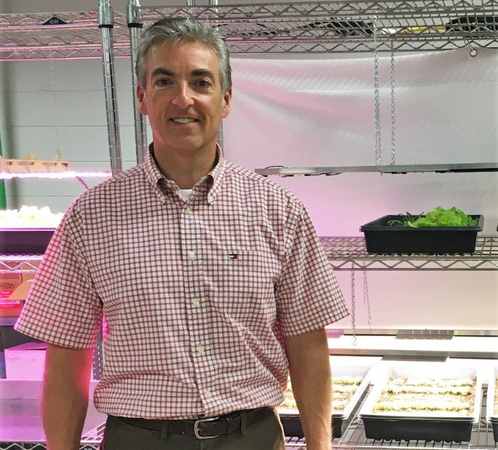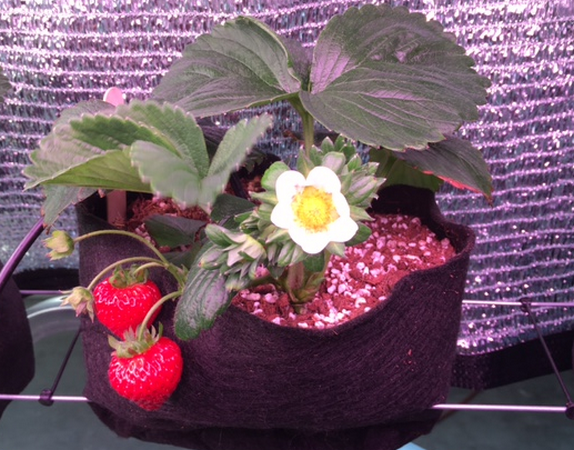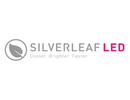“We are developing a new product using our patented alumiLED™ technology that places individual aluminum LED circuit plates directly over the plants,” says Tom Martin, CEO and founder of Silverleaf Tech.
Silverleaf Tech is a horticultural lighting designer and manufacturer based in Fort Wayne, Indiana. As Tom explains, the company is completely vertically integrated. Silverleaf LED prints the LED circuits directly on aluminum extrusions, which are then populated with LED chips using the company’s own surface-mount technology. All subsequent light assembly is also done internally.
“We’ve had tremendous success in greenhouses, with the LEDs positively affecting the taste, texture, color, density and weight of the crops,” says Tom.

Tom Martin
Several options
Silverleaf offers three standard lighting options, while clients can also request completely customized solutions. Within its standard options, Stage 1 was developed for early development and propagation. Stage 1 offers a higher blue output to stimulate root growth. Stage 2 was designed to maximize vegetative growth by providing high levels of red light, while Lifecycle is a balanced light recipe for all stages of growth.
“These three are Silverleaf’s standard configurations, which we can mix and match to meet a customer’s specific needs. Customers can order any LED light recipes. Each lighting unit contains 3-4 light bars that are 56 cm long and can be optimally arranged over a 30 cm width for uniform coverage,” says Tom.

Helicopter view
According to Tom, Silverleaf’s manufacturing processes are very modular and can be quickly adapted to changes in the horticultural lighting industry. “We all know the history of PAR wavelengths, which started by focusing on blue and red but is now shifting towards full spectrum. We’re working from that industry evolution and can adapt to those changes quickly since our processes are so modular,” explains Tom.
Optimizing energy efficiency and uniform light capture
Silverleaf’s alumiLED technology places individual aluminum LED circuit plates directly over the plants, with the array being easily customizable to match the arrangement of the plants and increase photon capture by the leaves.
According to Tom, many horticultural lighting providers focus on maximizing the light coverage area by keeping the lights 0.5-1.5m above the crop, which effectively reduces the light intensity at the plant level and reduces energy efficiency. When energy efficiency being highest when the lights are close to the plant, Tom notes that Silverleaf’s design allows lights to be placed directly over the crop.

Strawberry trial close up
Small profile means less shading in a greenhouse
While Silverleaf’s LEDs seem most suited to indoor farms, Tom also notes that the lights’ narrow profile also makes the lights useful for greenhouse application as they block out little incoming light. Silverleaf has been trialing its lights with certain greenhouses in Indiana and has reported success growing microgreens, leafy greens and tomatoes.
 For more information:
For more information:
Tom Martin, CEO and founder
Silverleaf LED
tmartin@appliedcermet.com
https://silverleafled.com
